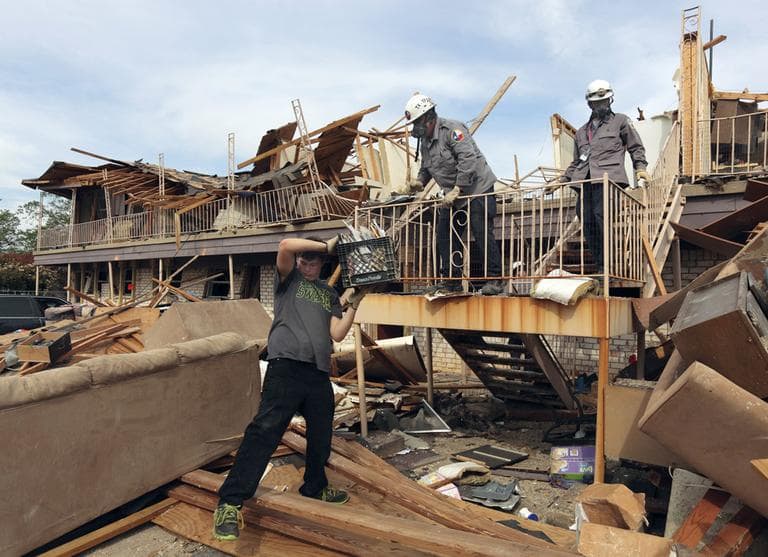Advertisement
Finger Pointing And Few Answers After Texas Explosion
Resume
It's still not known why a fertilizer plant exploded in April in West, Texas, on April 17.
The blast killed 14 people, leveled homes and destroyed two schools and a nursing home. It left a crater 93-feet across and 10-feet deep.
"For the local government and for state officials not to stop and think of the dangers that that posed to the nearby residents is just unthinkable."
Texas state officials say local officials should have educated the 2,800 residents about the risk of building close to the plant.
But West Mayor Tommy Muska says he had no jurisdiction over the plant.
"The plant has just been there forever. It's been there all my life - I'm 55 years old and it's been there since I was born," Muska told Here & Now. "Technically, it's not in the city limits, it's out in the country."
Muska says homes, schools and a nursing home were built around the plant over the years.
"There's questions - you can always go back and ask questions and Monday quarterback," he said. "But that's an integral part of our community because this is an agricultural community."
Dallas Morning News editorial writer Tod Robberson says it's now known that 540,000 pounds of ammonium nitrate fertilizer were stored at the plant.
"It's a huge amount of ammonium nitrate," Robberson told Here & Now's Robin Young. "For the local government and for state officials not to stop and think of the dangers that that posed to the nearby residents is just unthinkable. Especially having the history in Texas - the Texas City disaster back in 1947, where a similar quantity of ammonium nitrate exploded and pretty much obliterated the town."
Robberson writes in a recent editorial that West residents were kept in the dark about the hazardous chemicals stored at the plant, because of a little-known Texas law aimed at keeping such information secret from terrorists.
Latest coverage by Dallas Morning News:
Millions of people in the U.S. live and work near high-risk chemical plants. Are you eyeing one? Or do you think your town has a handle on yours? Tell us on Facebook or in the comments.
Guest:
- Tommy Muska, mayor of West, Texas.
- Tod Robberson, editorial writer for The Dallas Morning News. He tweets @trobberson.
This segment aired on May 2, 2013.